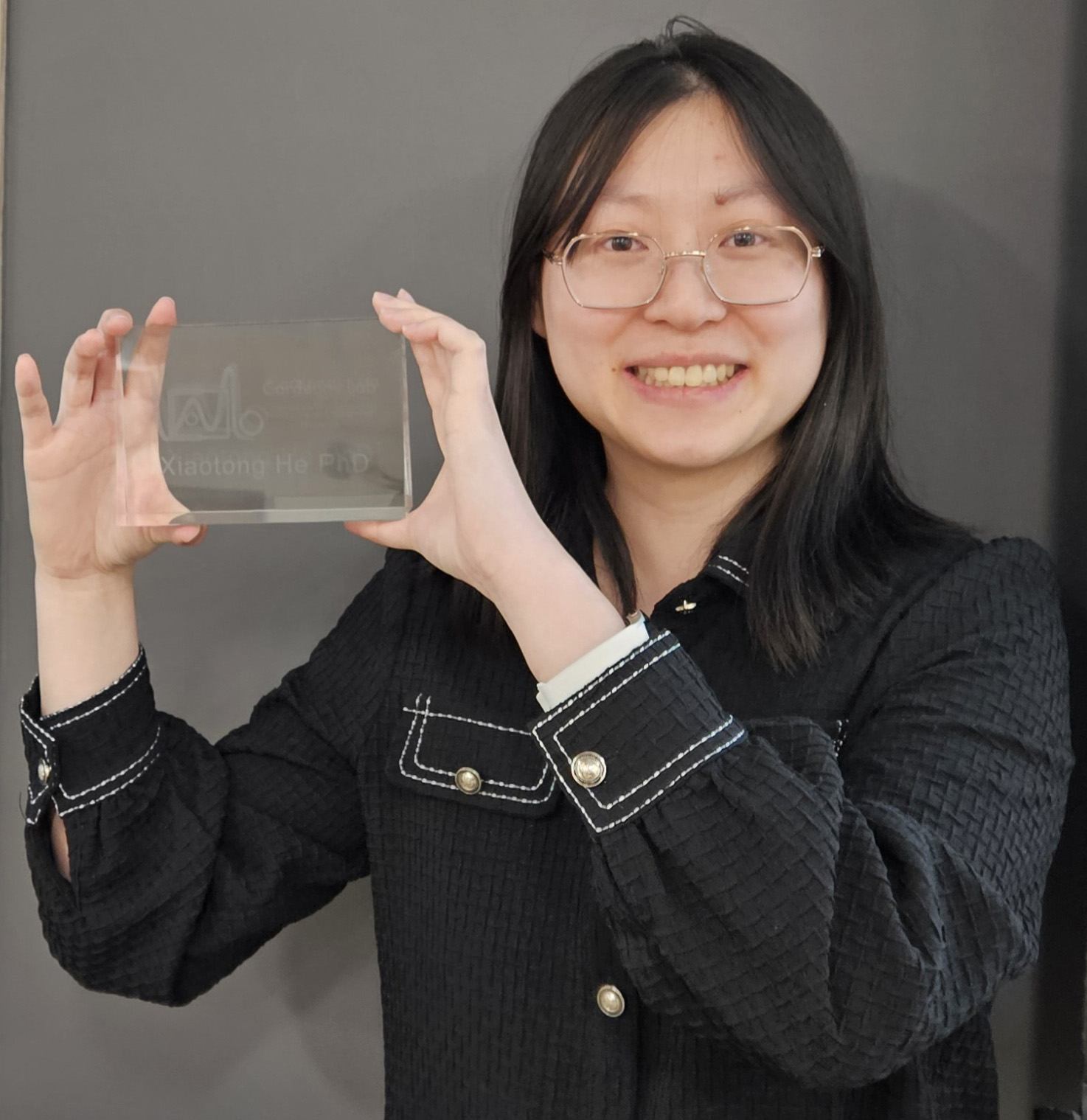
April 2024
My name is Xiaotong He. I’m from Liaoning province in China. I received my bachelor’s degree in Physics from the University of Science and Technology of China (USTC), in 2018. I did my graduate studies at the Institute of Optics of the University of Rochester where my doctoral research focus was on novel integrated photonics devices with ring resonators. I defended my PhD thesis in April 2024.
From an early age, I had great interest in Physics and dreamed of becoming a scientist when I grew up. Pursuing a PhD degree was always in my life plan. During high school, I participated in a Physics competition, which led to my admission into the Physics program at USTC. I found my interest in optics when I joined a research group, and I learned basic optical alignment techniques. As my knowledge deepened, I realized my preference for practical, application-driven research and decided to pursue a career in the industry after completing my PhD. By the end of my sophomore year, I specialized in optics, a field I found to be more “applied,” compared to others like condensed matter or atomic and molecular physics.
The Institute of Optics at the University of Rochester was one of my dream graduate programs. So, I was thrilled to receive an offer from UR in my senior year. After completion of my undergraduate degree, I felt somewhat uncertain about my future and was eager to deepen my understanding of optics before making any final career decisions. What attracted me most to the optics program at the University of Rochester was the flexibility in choosing advisors after a year of coursework. Additionally, the first-year series, “What’s Up in Optics,” provided an excellent opportunity to get to know all the optic-related research groups. Jaime Cardenas’ presentation was the first one that year. What he discussed about integrated photonics intrigued me greatly. Previously, I had spent lots of time aligning mirrors and lenses for optical experiments, but photonic chips could minimize optical devices to the size of a fingertip. After a discussion with Jaime, I made the decision to join the Cardenas Lab in the 2019 spring semester.
Once I joined the group, I began working on an Adiabatic Frequency Conversion (AFC) project involving device fabrication in lithium niobate. As a novice in integrated photonics and nanofabrication, the task was not easy for me. The fabrication process, including e-beam lithography, was complex and tricky, and the procedures used for silicon nitride did not fully apply to lithium niobate. My initial attempts at fabrication were unsuccessful. However, with substantial help from Jaime and my lab mates, Yi and Meiting, I overcame these challenges. It was also helpful that our lab maintains detailed fabrication notes providing previous invaluable experience for using the tools in fabrication. Also, Jaime’s extensive experience in fabrication proved to be crucial. Eventually, I successfully produced a “golden” chip used for AFC, the results of which we later published.
Beyond the research skills, Jaime consistently emphasized the importance of delivering technical talks and presenting our research. He encouraged us to present posters at the Industrial Associates Symposium. I recall my very first IA feeling tremendously nervous and stressed, and I was unable to respond satisfactorily to the audience’s questions. However, with experiences accumulated in these IAs, my ability to explain my research and answer questions was greatly improved and helped me a lot in interviews and conferences. During group meetings, I developed my public speaking skills through numerous practice sessions for conference presentations, PhD thesis defense, and even job interviews. During these rehearsals, Jaime and my lab mates reviewed each slide, offering feedback on every small detail to enhance clarity and attraction. This helped me feel prepared and confident during actual presentations.
My doctoral journey included working on almost every step of integrated photonics, from design and layout to fabrication and characterization. I also collaborated with an industry company on taping out and packaging the devices I designed. These experiences not only enriched my skills but also deepened my interest in the field. After getting my PhD degree, I’m excited to continue working on integrated photonics real applications in the industry.



